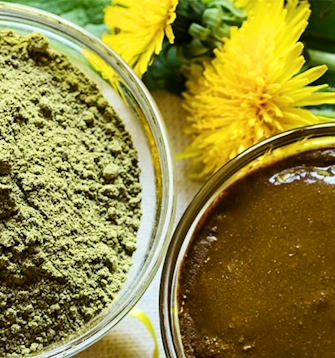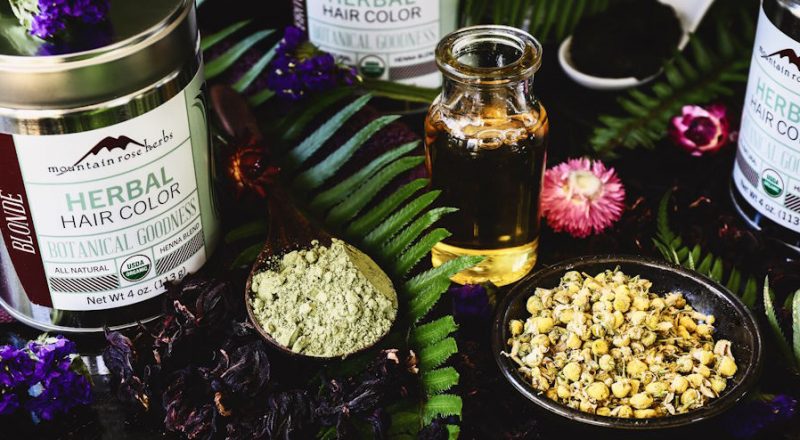In the quest for luscious locks, more people are turning to natural at-home hair dyes as a gentle alternative to traditional chemical treatments. With concerns over the long-term effects of synthetic ingredients on both hair health and the environment, the spotlight is shifting towards herbal hair coloring methods. These age-old remedies, rooted in tradition and nature’s bounty, offer a promising solution for those seeking vibrant hues without compromising on wellness.
Benefits of Herbal Hair Coloring
Gentle on the Scalp and Hair
Herbal hair coloring offers a gentle alternative to chemical dyes, making it suitable even for those with sensitive scalps. Unlike harsh chemicals that can strip the hair of its natural oils, herbal ingredients such as henna and indigo work in harmony with the scalp, promoting healthier hair growth without causing irritation or discomfort. The soothing properties of these natural dyes ensure a relaxing coloring experience, leaving the scalp feeling refreshed and rejuvenated.
Less Damaging Than Chemical Dyes
 One of the primary advantages of herbal hair coloring is its minimal damage to the hair shaft. Chemical dyes often contain harsh ingredients like ammonia and hydrogen peroxide, which can weaken the hair structure and lead to breakage and dryness over time. In contrast, herbal dyes nourish the hair from root to tip, enhancing its strength and resilience. With regular use, herbal hair coloring can help maintain the integrity of the hair, resulting in softer, smoother strands with reduced frizz and split ends.
One of the primary advantages of herbal hair coloring is its minimal damage to the hair shaft. Chemical dyes often contain harsh ingredients like ammonia and hydrogen peroxide, which can weaken the hair structure and lead to breakage and dryness over time. In contrast, herbal dyes nourish the hair from root to tip, enhancing its strength and resilience. With regular use, herbal hair coloring can help maintain the integrity of the hair, resulting in softer, smoother strands with reduced frizz and split ends.
Natural Nourishment for Hair
Herbal hair coloring provides natural nourishment for the hair, infusing it with essential vitamins, minerals, and antioxidants. Ingredients like henna, amla, and cassia are known for their conditioning properties, helping to improve hair texture and shine. By incorporating these botanicals into your hair care routine, you can achieve vibrant color results while simultaneously replenishing moisture and restoring vitality to your locks.
Different Types of Herbal Hair Colors
Henna
- Origins and Traditional Use
Henna, derived from the leaves of the Lawsonia inermis plant, has been used for centuries in various cultures for hair coloring and body art. Its rich history traces back to ancient Egypt, where it was prized for its dyeing properties and symbolic significance in rituals and ceremonies.
- Application Process and Results
To apply henna, the powder is typically mixed with water to form a paste, which is then spread evenly onto the hair. After leaving it on for several hours, the henna is rinsed out to reveal vibrant, reddish-brown tones. Henna not only colors the hair but also coats each strand, resulting in increased thickness and volume.
- Pros and Cons
One of the main advantages of henna is its long-lasting color payoff and ability to cover gray hair effectively. However, some users may find the application process time-consuming, and the color result can vary depending on individual hair type and previous treatments. Additionally, henna is permanent and cannot be easily removed with conventional hair dye removers.
Indigo
Role in Herbal Hair Coloring
Indigo, derived from the Indigofera tinctoria plant, is often used in conjunction with henna to achieve various shades of brown and black. When combined with henna, it produces rich, dark hues that are ideal for covering gray hair or achieving a deep, intense color.

Mixing with Other Ingredients
Indigo is typically mixed with henna powder and other natural ingredients such as amla powder or coffee to customize the shade and enhance the color result. The mixture is applied to the hair like traditional henna paste and left on for several hours before rinsing.
Effects on Hair
Indigo not only colors the hair but also acts as a natural conditioner, leaving it feeling soft, smooth, and nourished. Unlike chemical dyes, which can cause dryness and damage, indigo strengthens the hair shaft and promotes overall hair health with regular use.
Cassia
Properties and Benefits
Cassia, also known as neutral henna, is derived from the leaves of the Cassia obovata plant. Unlike henna and indigo, cassia imparts a golden-yellow color to the hair, making it an excellent choice for those seeking a natural highlight or brightening effect.
Uses and Application
Cassia can be used on its own or mixed with other herbal powders to customize the color result. It is applied to clean, damp hair and left on for 1-2 hours before rinsing. Cassia is known for its conditioning properties, leaving the hair feeling soft, silky, and hydrated.
Results and Considerations
While cassia is a gentle and natural alternative to chemical dyes, it may not provide as dramatic a color change as henna or indigo. Additionally, cassia is not effective for covering gray hair, as it imparts a translucent, golden hue rather than full coverage. However, for those looking to enhance their natural hair color or add subtle highlights, cassia can be a fantastic option.

